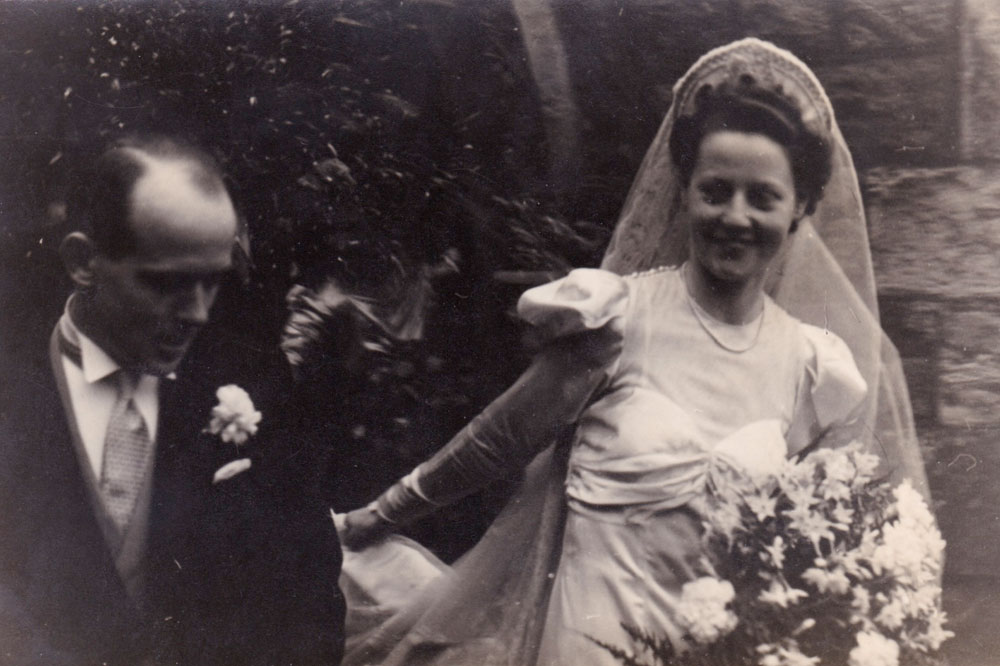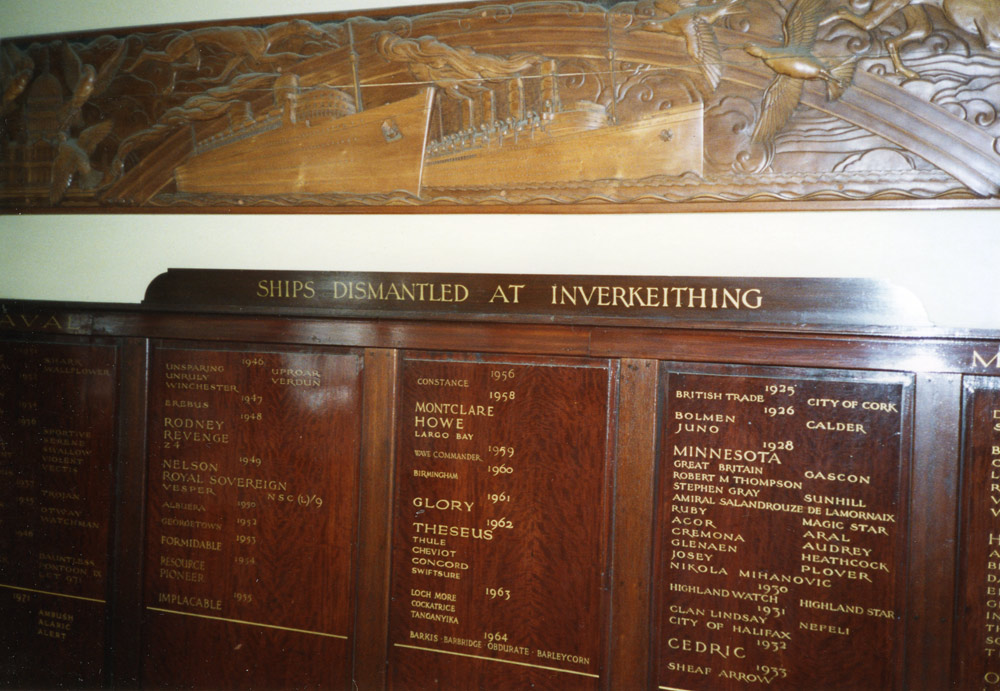

HMS VESPER


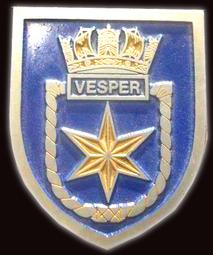
 The HMS Vesper Association
was formed in 1985 and met annually at Skipton, Yorkshire, between 1986
and 2013. Skipton raised £492,887 to adopt her during a Warships Week
fund raising campaign in February 1942. Plaques to commemorate Vesper’s
link with the town were placed in Skipton’s canal basin in 2007 and a
letter wishing the association well was received from its patron, HRH
Prince Philip, the Duke of Edinburgh, who served on HMS Wallace. Another patron was Sandy Stephen, the grandson of Alexander Stephen, the founder of the shipbuilder which built HMS Vesper at Govan on the Clyde in 1917. He and he and his wife, Sue, have attended many reunion weekends over the years.
The HMS Vesper Association
was formed in 1985 and met annually at Skipton, Yorkshire, between 1986
and 2013. Skipton raised £492,887 to adopt her during a Warships Week
fund raising campaign in February 1942. Plaques to commemorate Vesper’s
link with the town were placed in Skipton’s canal basin in 2007 and a
letter wishing the association well was received from its patron, HRH
Prince Philip, the Duke of Edinburgh, who served on HMS Wallace. Another patron was Sandy Stephen, the grandson of Alexander Stephen, the founder of the shipbuilder which built HMS Vesper at Govan on the Clyde in 1917. He and he and his wife, Sue, have attended many reunion weekends over the years.| CPO George Adby, Ian "Bud" M. Allen (Dundee) Lt Humphrey Atkins RN LS Tom Backlog Jack Bailes Frederic Barton, Chief TI (Bournemouth) Lt Brian Benson-Dare (Eastbourne) Tom "Tubby" Bicknell, Coder AB George Blower ASDIC (Hythe, Kent) Ldg Stoker John Blundell (Liverpool) LS Cyril Boyes (Paddock Wood, Kent) Lee Breton Cox'n Capt D.H.R. "Hard Over" Bromley (Devon) AB Dennis Broughton (Derby) AB Norman Brown (Birmingham) Nick Carter Cox'n (Harpenden) |
AB Walter Causer, Asdic (Bedford) AB James Chapman (Basildon, Essex) John Christie, Ship's Writer (Perth) Tom "Nobby" Clarke, Yeoman of Signals (Ontario, Can) AB George Cumbridge (Louth, Lincs) AB Derek Deakin (Leeds) AB Thomas Dixon (York) AB John Dupré, Asdic (Jersey, CI) Artghur Elliott (Stourbridge) LS Frederick Englasnd, Asdic (Wolverhampton) Lawson French, Telegraphist (Edinburgh) Capt I.G.H. Garnett (Blandford Forum, Dorset) AB L. Gilbert (Leicester) LS William R Goode (Daventry) Eric "Jimmy" Green Chris Green, ERA (Warsash, Hants) |
Philip Grimmett, Telegraphist / HRDF (Croydon) Reg Haines, AB RDF (Douglas, Isle of Man) Roy Hale (Southal, Middx) Stanley Hatter, Stoker (Hillingdon, Middx) AB George Haynes, RDF (London) Lt Cdr D.I. Haywood (Launceston, Cornwall) AB John Herring (Dunbar, Easat Lothian) AB Jim H. Hiscock (Bow, London) AB Eric J.H. Hollingshead (Welling, Kent) Stanley J. Holmes, Telegraphist (Consett, Co Durham) Sub Lt Hoyle AB Colin "Taffy" Hughes (Telford, Salop) Lt Cdr Hussey Bernard "Jacko" Jackson, LTO (Ontario, Canada) AB James john Jarred, Stoker (Orpington, Kent) |
D.H. Jolliffe, RDF mechanic William "Taff" Jones Terry Kingsley, Stoker (York) David C Kirk, Sgnalman (Hanworth, Middx) AB Jim Lawlet (Lowestoft) Sub Lt Bob Leathes (Swanmore) William Leslie, HFDF (Dunmow, Essex) Norman L Lewin (Norwich) Frank Lovatt Jack Marsh, Leading Signalman (Sheffield) Charles F. Matthews (Brentwood, Essex) K. McLellen Stoker"Jock" McCulloch Telegraphist Duncan McIver AB RDF (Hull) AB F.George McLean RNVR (Eastbourne) George Meager, AB RDF (Dartford) Victor Millis |
Harry Oldfield (Alfreton, Derbyshire) "Doc" Ogden, SBA Thomas O'Kell AB Asdic (Wolverhampton) Bill Park, "Jack Dusty" (Spalding, Lincs) Bob Pettit William Vaughan Powell, Torpedoman (Bristol) W.P.A. Pursey, AB RFR (Norfolk) Jim Ramsden, HFDF AB Anthony Razey (Derby), the "Tankey" (butcher). AB Fred Read (Southampton) AB Ronald G Redford (Manchester) Lt Cdr Rodgers RN (Bude) AB J.W.Eric Rowse (Haywards Heath) George Sims, Telegraphist (Sunbury on Thames) LS Alf Smith, RDF (Shropshire) Charles "Stripey" Spinner Stoker (Gillingham, Kent) |
LS Eric E Stenning (East Molesley, Surrey) AB Alan Stewart (Fife) Sussex, Ldg Stoker Victor Taylor, Stoker (Twickenham) AB Paul Tin (Ontario, Canada) Peter Tin (Guildford, Surrey) LS Joseph Vaughan (Kidderminster) LS Charles Vickers, Asdic AB Joe Waldron, Asdic (East Grinstead, W. Sussex) Simon Warboys, Signalman (Kent) AB James Wass, RDF William Arthur Webb, Jack Dusty Raymond A. Williams, Stoker (Holsworthy, Devon) Sub Lt Cyril Wickstead (Colchester, Essex) George Woodcock (Lymington, Hants) |
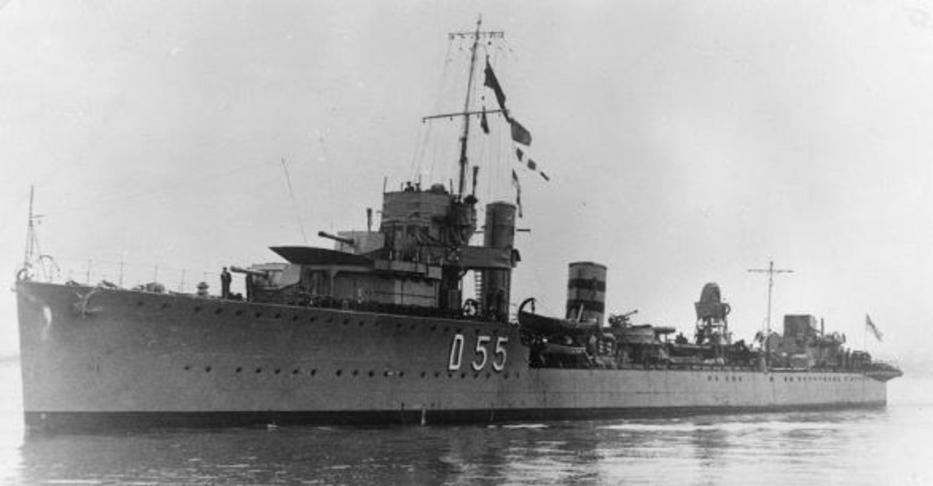
Commanding Officers
| Cdr Lionel Vavasseur Lloyd RN (10 June 1937 - 31 July 1939) Lt.Cdr. William Frederick Eyre Hussey, RN (31 Jul 1939 - 24 Feb 1941) Lt. Peter William Furneaux Stubbs, RN (24 Feb 1941 - 14 May 1942) |
Lt. Douglas Henry Reid Bromley, RN (14 May 1942 - early 1943) Lt.Cdr. John Malcolm Rodgers, RN (8 May 1943 - 1 Apr 1944) Lt.Cdr. Vernon Dudley Ravenscroft, RN (1 Apr 1944 - mid 1945) |
Officers
Part list of wartime officers taken from the quarterly Navy Lists
| Sub Lt N.A. Bartlett RNR (19 Apr 1940 - Lt D. H. R. Bromley (14 May 1942 - Engineer. A. J. Eames (23 May 1943 - Lt H. R. Evans (29 July 1941 - Gunner (T) C. F. J. Fishenden (18 May 1942 - Engineer A.J. Fisher (9 Nov 1940 - Gunner E. T. Goodwin (20 Feb 1940 - Lt P.R. Hancox RNVR (21 Jan 1944 - Lt D. I. Haywood (20 Apr 1943 - Sub Lt B.Healcy (24 Jan 1942 Lt J.C. Holland (8 Sept 1941 - Sub Lt. W. H. Hoyle RNR (3 June 1943 - |
Sub Lt D. G. Humphreys RNVR (23 May 1943 - Lt Cdr W. F. E. Hussey, DSC (31 July 1940 - Lt G. D. W. Ram (Nov 1939 - Lt D. W. Souter RNVR (13 May 1942 - Sub Lt W. B. Taylor RNR (31 July 1939 - Lt J. A. Tricker (2 Mar 1940 - Surg. Lt W. F. Viret, MRCS, LRCP (17 Jan 1940 - Sub Lt C. Wickstead RNVR (9 June 1943 - WO Gunner G. S. Williamson (15 Dec 1943 - Surg. Lt P. N. Wilman, MB, BS (15 June 1943 - Lt H. J. A. Wilson RNVR (5 May 1943 - |

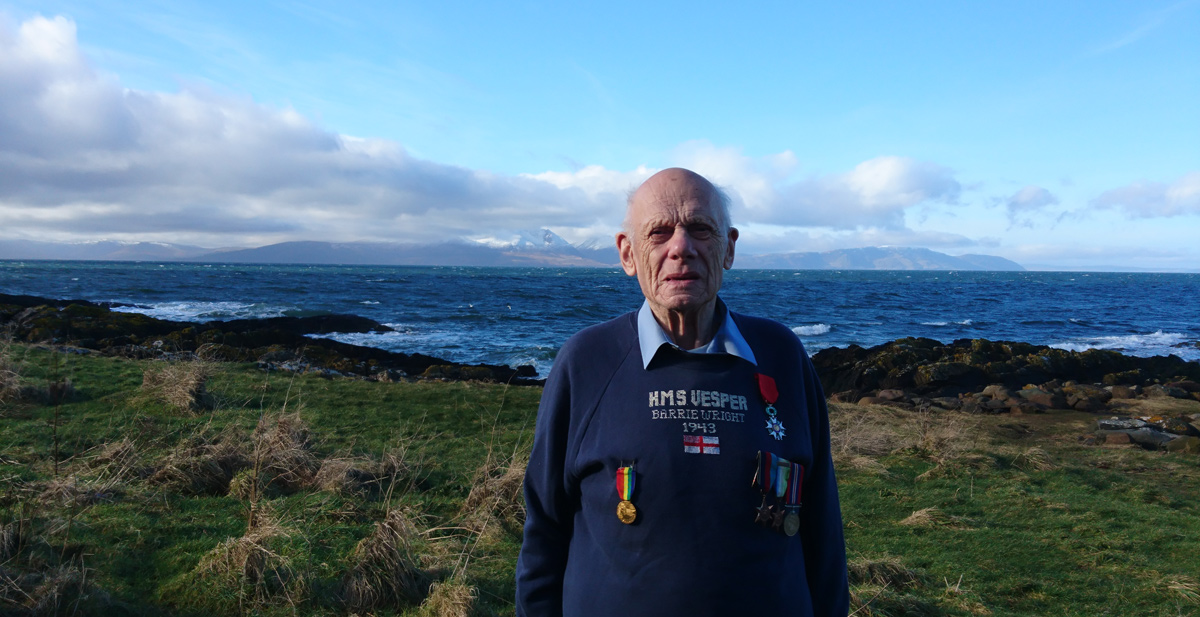
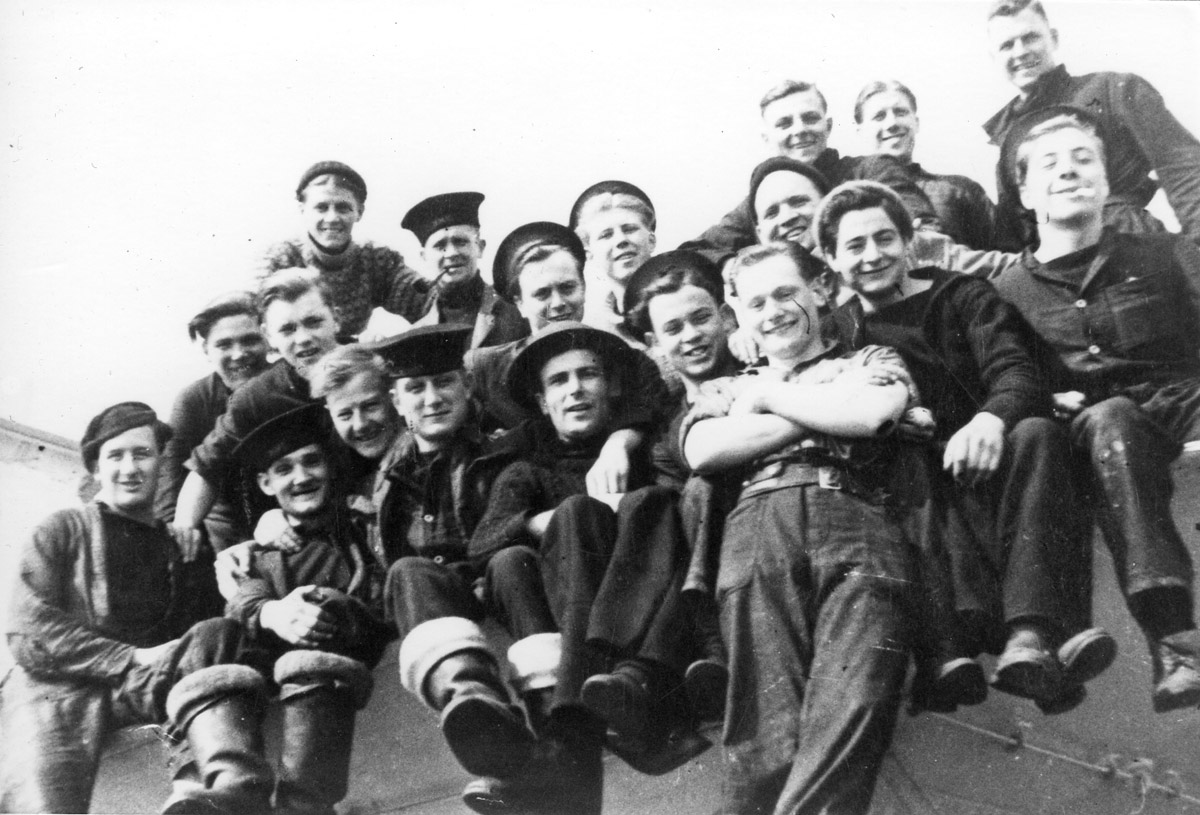
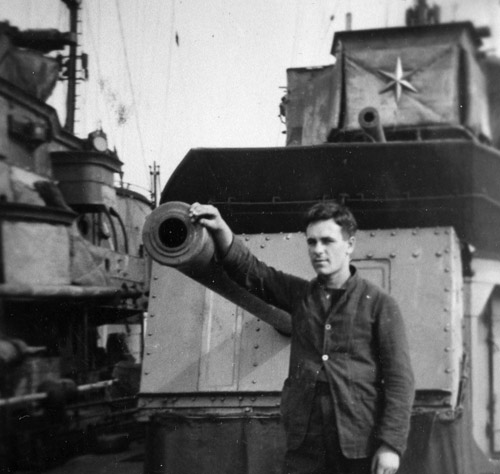 AB George McLean on A Gun, Chatham 1943, was from Kentish Town
|
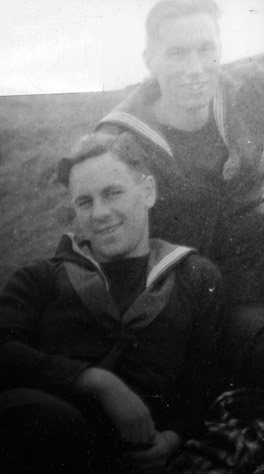 Harry Bradbrook & George McLean
|
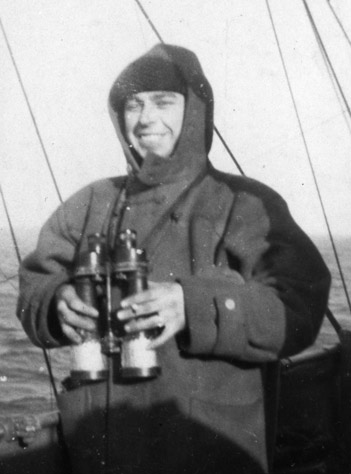 AB Harry Russell with binoculars and “tickler” (fag)
|
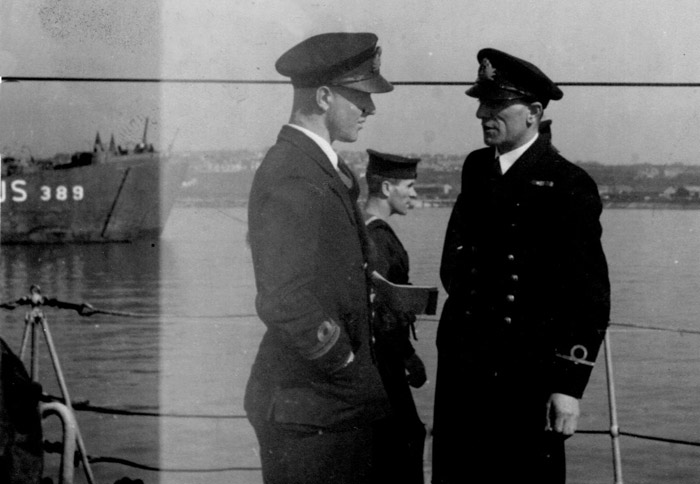 First
Lt Douglas I. Haywood RN (left) talking to Gunner (T), WO C. F. J. Fishenden RN, in August 1944
Note the Landing Ship 389 on the left |
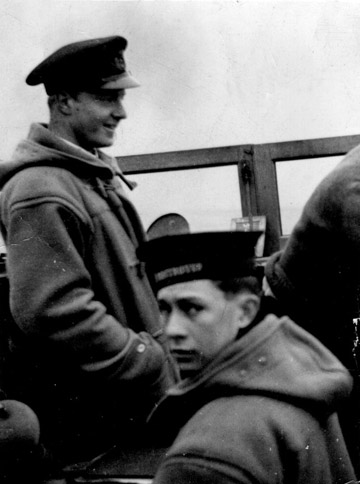 Lt D.I. Haywood RN with David Kirk, a boy signalman
And the glass screens on the bridge |
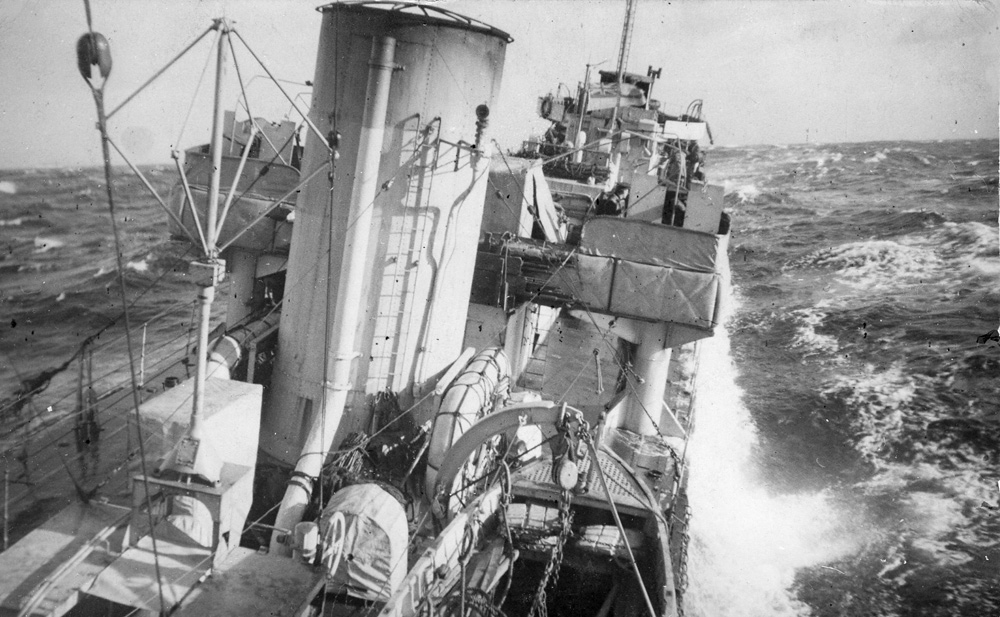
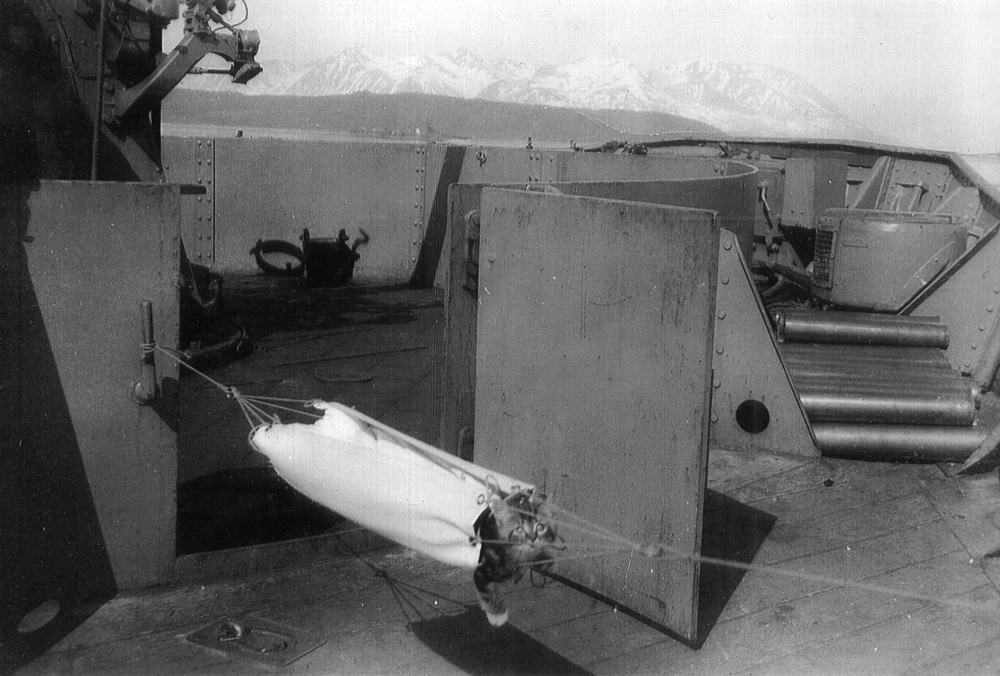
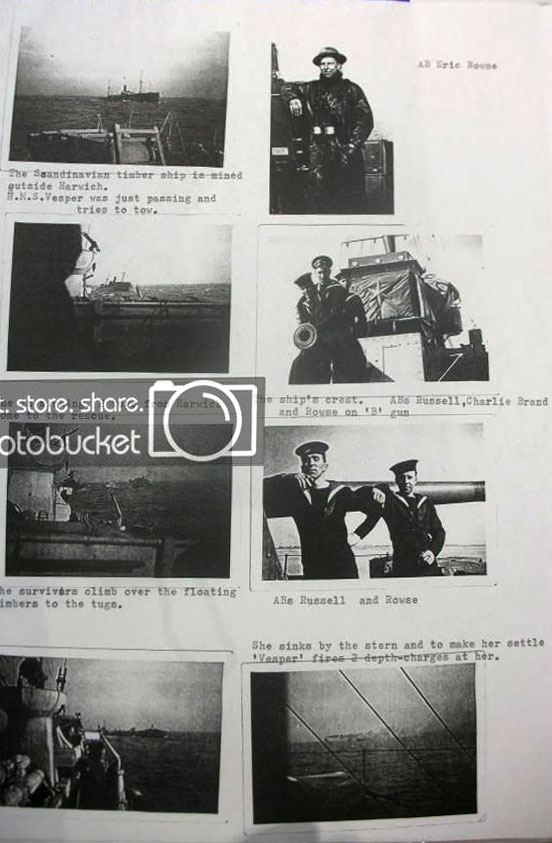
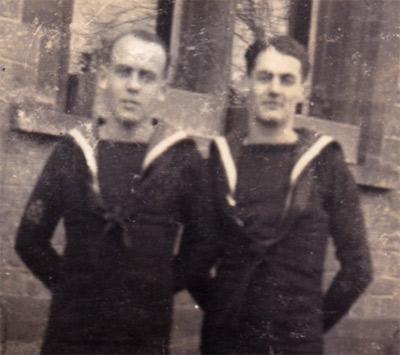
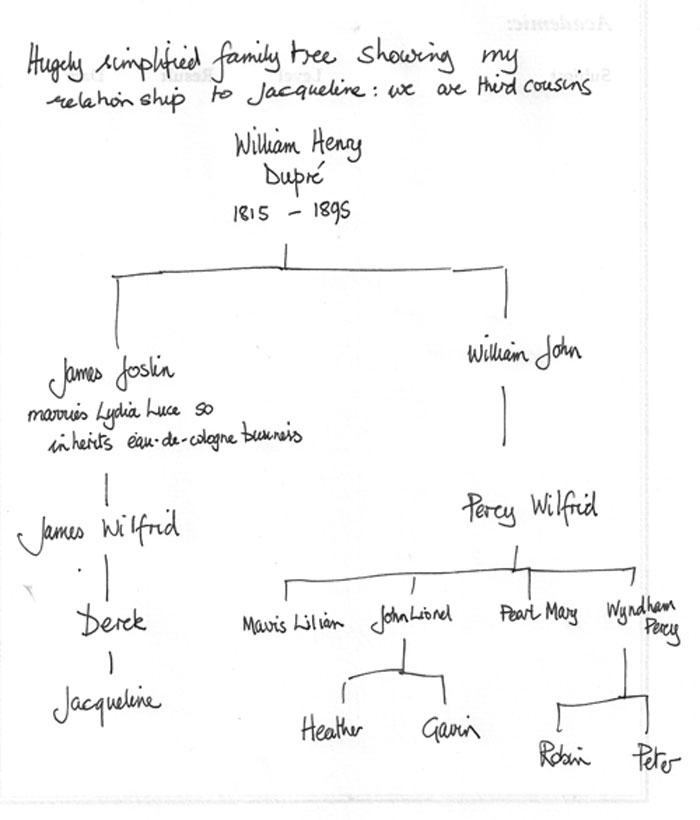 John
Dupré was born in 1918 at St Helier, Jersey, in the Channel Islands. The best known member of the family is, of course, Jacqueline du
Pré, the cellist. John's nephew, Robin Dupré, explained how and
why the two branches of the family choose to spell and pronounce their
family name in different ways:
John
Dupré was born in 1918 at St Helier, Jersey, in the Channel Islands. The best known member of the family is, of course, Jacqueline du
Pré, the cellist. John's nephew, Robin Dupré, explained how and
why the two branches of the family choose to spell and pronounce their
family name in different ways: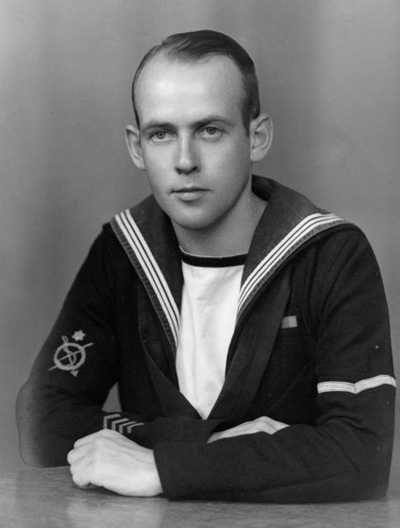 "On
arrival in England I went to Banbury to live with Mavis Garner, my
elder sister, and secured a temporary job at the local Labour Exchange
for a few weeks. Eventually, I was transferred to the Ministry of
Aircraft Production (Aluminium Control Section). At that time it was
necessary to control the use of the metal as most of it went into
aircraft production although we covered War Office and Admiralty
contracts. It was interesting work and I was quite happy but realised
that my war effort was not exactly the best so joined the RN.
"On
arrival in England I went to Banbury to live with Mavis Garner, my
elder sister, and secured a temporary job at the local Labour Exchange
for a few weeks. Eventually, I was transferred to the Ministry of
Aircraft Production (Aluminium Control Section). At that time it was
necessary to control the use of the metal as most of it went into
aircraft production although we covered War Office and Admiralty
contracts. It was interesting work and I was quite happy but realised
that my war effort was not exactly the best so joined the RN. |
 |
